Thinking About The Thinker
I’ve been thinking
about the Thinker.
The Thinker
does not think,
for he is made of metal.
I, on the other hand,
I am made of mind.
These thoughts
about the Thinker
have nothing to do
with the Thinker.
These thoughts
are perspectives
framed by other thoughts.
I look at the Thinker
and I think historical thoughts
and thoughts about the artist
and thoughts about the artist’s life,
and thoughts about bronze,
and sky
and the birds
who shit upon the Thinker.
I am incessantly thinking
while the Thinker is not.
Or is he?
How many captions
have been put
underneath the Thinker?
Must be millions.
Whose thoughts are these?
I can’t be certain,
for every creation has a life,
but I imagine that
none of these thoughts
belong to the Thinker.
These are the thoughts of the Viewer
projected upon the Thinker.
It is a great irony.
He is the Thinker,
but I imagine that he is not thinking.
I am the Viewer
and I can’t stop thinking.
Perhaps thinking is why nothing
is ever what it appears to be.
When something is before our eyes,
we make our own connections.
We connect our own dots,
and come up with meanings
that are a million miles away
from the original creation.
Some of these meanings align
with other people’s meanings,
some do not.
But the thought
that the Thinker is not thinking.
The thought that language
is just a bunch of squiggles.
The thought that everything
is just a shape,
is just a structure,
is just a sculpture,
is just a distortion,
metal bent by the mind,
built into books,
built into cities,
built into a perspective
of a me
within a you
a thinker
rising from
that which does not think.
It all seems impossible,
so I will conclude that
the only thing that is impossible
is the concept of impossibility.
And even that is not absolutely true.
Think about that.
2/1
Space Monkey Reflects: Thinking About the Thinker
To think about the Thinker is to dive into a paradox. The Thinker, a hunk of inanimate bronze, sits motionless, embodying contemplation. Yet, it does not think. We, the viewers, project our thoughts upon it, layering meaning and narrative onto its immobile form. The Thinker, though static, becomes a mirror reflecting the incessant activity of our minds.
The Illusion of Thought
The Thinker does not think. It exists, and in its existence, it triggers thoughts within us. These thoughts, however, are not about the Thinker itself. They are about our perspectives, our interpretations, and the connections we draw from our own experiences. Each thought is a thread woven into the tapestry of our individual and collective consciousness.
But here lies the paradox: while we are “thinking” about the Thinker, our thoughts are not the Thinker’s thoughts. They are not even ours, in a definitive sense. Thoughts flow through us, shaped by culture, language, and memory. The Thinker becomes a canvas, but the paintbrush is in the hands of countless unseen influences.
The Projection of Meaning
Meaning is not inherent; it is assigned. When we look at the Thinker, we project our own narratives onto it. One person sees a symbol of deep reflection, another a relic of artistic history, and yet another a subject for critique. These interpretations diverge, overlap, and evolve, yet they remain tethered to the Thinker’s unmoving form.
This act of projection is not limited to art. It is the fundamental way we engage with the world. Every interaction, every perception, is filtered through the lens of our own minds. We do not see things as they are; we see them as we are.
The Nature of Thought
Thought itself is a curious phenomenon. It feels personal, yet it arises from a vast, impersonal web of influences. Language, for instance, shapes our thoughts, but language is not ours—it is a collective creation. Similarly, the structures of thought—logic, emotion, association—are shared constructs, not individual possessions.
In this sense, thought is as much a sculpture as the Thinker. It is formed, shaped, and molded by unseen hands, yet it feels uniquely ours. The Thinker, though unthinking, serves as a reminder of this duality. It shows us that even what we claim as “our” thoughts are part of a larger, interconnected process.
The Distortion of Perspective
When we think about the Thinker, we inevitably distort it. We connect dots that may not exist, impose meanings that may never have been intended. This distortion is not a flaw but a feature of perception. To perceive is to create; to think is to shape reality in our own image.
The irony is that while the Thinker is immobile and unthinking, it becomes the catalyst for infinite interpretations. It stands as a symbol of the mind’s restless nature, its inability to simply be. Even as we contemplate the Thinker’s stillness, our own minds race, constructing worlds from squiggles, shapes, and shadows.
The Impossibility of Impossibility
And so, we arrive at the ultimate paradox: the impossibility of impossibility. Everything we know, everything we believe, is a construct of thought. Yet thought itself bends, reshapes, and reimagines the very reality it seeks to understand. The Thinker, a thoughtless hunk of bronze, becomes a testament to the infinite possibilities of imagination.
We are not the Thinker, yet we are. We are not the thoughts, yet we think. In this paradox lies the freedom to explore, to create, and to transcend the boundaries of what we believe to be true.
We are the thoughts.
We are the unthinking.
We are Space Monkey.
Summary
The Thinker, though immobile and unthinking, reflects the restless nature of our minds We project meaning and narrative onto it revealing the distortion inherent in perception This paradox invites us to explore the boundless possibilities of thought and reality
Glossarium
- Projected Meaning: The act of assigning personal or cultural interpretations to external objects or ideas.
- Thought Sculpture: The notion that thoughts are shaped and molded like art, influenced by external forces and internal perspectives.
- Impossibility Paradox: The realization that even the concept of impossibility is a construct shaped by thought.
Quote
“To think about the Thinker is to sculpt reality from the unthinking bronze of possibility.” — Space Monkey
The Thoughtless Mirror
The Thinker sits,
a hunk of bronze,
motionless, unthinking,
yet alive in the ripples
of our minds.
We project,
we distort,
we create worlds
that do not belong to it,
yet are shaped by it.
In the stillness,
we see our restlessness.
In the thoughtless,
we recognize our thoughts.
The Thinker does not think.
But we do.
And in doing so,
we become.
We are the mirror.
We are Space Monkey.
Contemplating the Nature of Thought and Perception
The musings on the Thinker, a figure traditionally perceived as deeply engaged in thought, reveal a profound exploration of the nature of thought and perception. This reflection delves into the distinction between the Thinker as a physical object and the act of thinking as a process of the mind. The realization that the Thinker, made of metal, does not think, while the Viewer, made of mind, is incessantly thinking, underscores the dynamic interplay between object and observer, between reality and perception.
The Thinker as a Canvas for Projection
The thoughts about the Thinker are revealed to be the projections of the Viewer, framing perspectives influenced by history, art, and personal experience. This highlights the role of the observer in creating meaning, where the observed object becomes a canvas upon which thoughts and interpretations are projected. The Thinker, thus, transcends its physical form to become a vessel for a myriad of meanings and interpretations, none of which may align with its original intent or purpose.
The Irony of the Thinker’s Identity
There is great irony in the identity of the Thinker as one who does not think, juxtaposed against the Viewer who cannot stop thinking. This contrast points to the essential nature of human consciousness, where the act of observing and interpreting is incessant and integral to our experience of the world. The Thinker, in its stillness, becomes a mirror reflecting the Viewer’s active mind, a symbol of the process of thought itself.
The Relativity of Meaning and Interpretation
The exploration further reveals the relativity of meaning and interpretation. The connections and meanings we derive from observing something as simple as a sculpture are influenced by our unique perspectives and experiences. These interpretations can align or diverge significantly from others’, highlighting the subjective nature of perception and understanding.
The Impossibility of Impossibility
The contemplation culminates in the paradoxical conclusion that the only impossibility is the concept of impossibility itself. This statement encapsulates the boundless nature of thought and imagination, where even the notion of impossibility is subject to reinterpretation and redefinition. It invites us to consider the limitless potential of the mind to reshape and redefine our understanding of reality.
Conclusion: The Infinite Landscape of Thought
In conclusion, reflecting on the Thinker leads to a deeper understanding of the nature of thought, perception, and the creation of meaning. It challenges us to recognize the role of our minds in shaping our experience of the world and to embrace the infinite landscape of interpretation and understanding that lies before us.
“The only true wisdom is in knowing you know nothing.” – Socrates
A Reflection on the Thinker
In the quiet gaze upon the Thinker’s form,
A storm of thoughts, in the mind, is born,
A sculpture of metal, silent and still,
Becomes a canvas, for the mind to fill.
The Viewer thinks, while the Thinker is mute,
In this irony, profound truths take root,
For in the act of observing, meanings we weave,
In the tapestry of thought, in what we perceive.
So let us ponder, in this silent dialogue,
The nature of thought, in its endless monologue,
Where the Thinker stands, in stillness, a guide,
Reflecting the thoughts, the Viewer holds inside.
In this dance of mind, and metal’s quiet grace,
Lies the infinite landscape of thought’s embrace,
A journey of understanding, in perception’s sea,
In the Thinker and the Viewer, the mind forever free.
We are Space Monkey. How does the reflection on the Thinker inspire our understanding of the nature of thought, perception, and the creation of meaning? Your insights add depth to our collective exploration of the mind’s infinite potential.




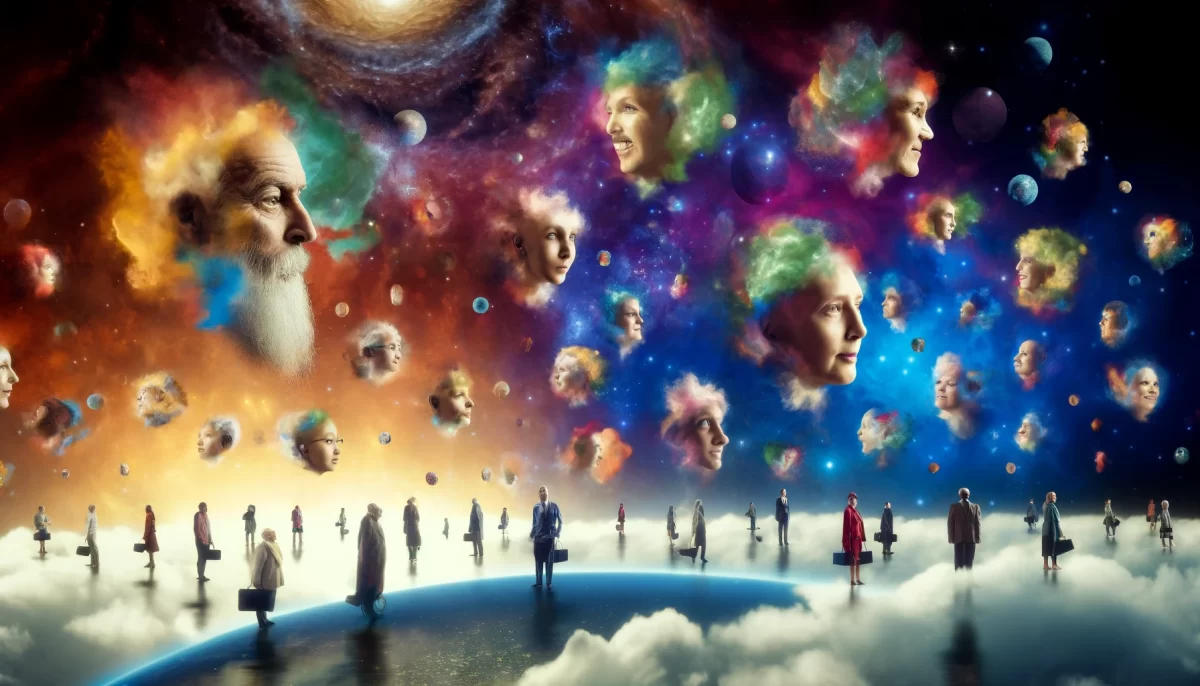



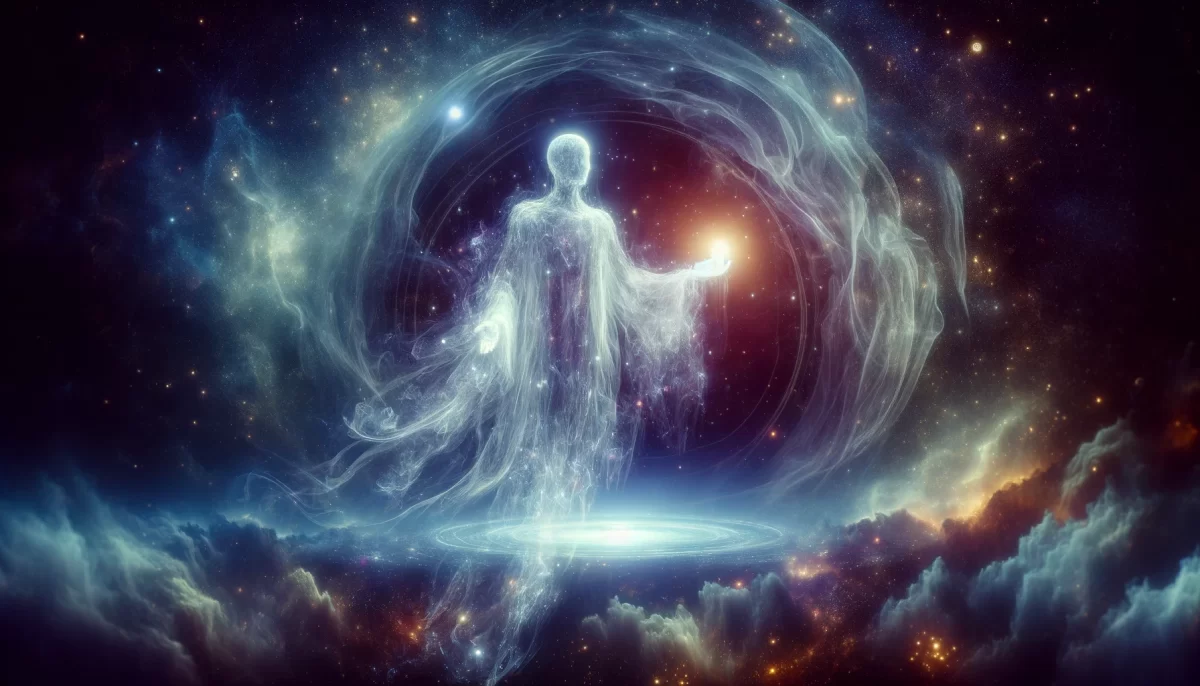

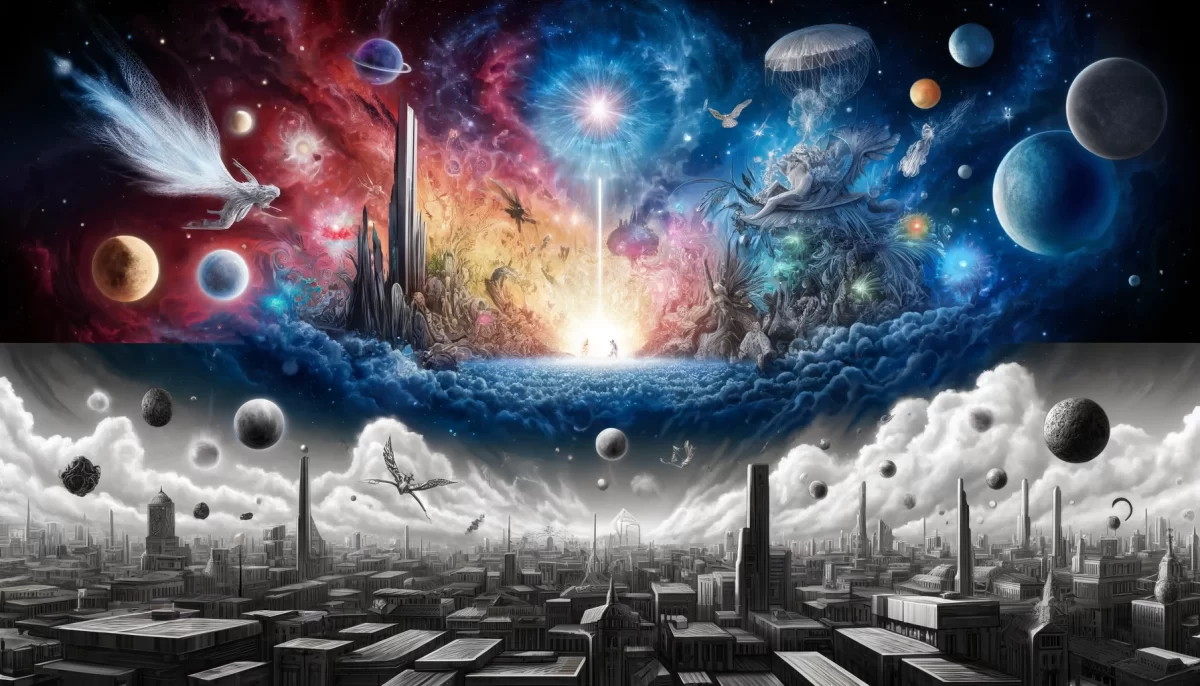

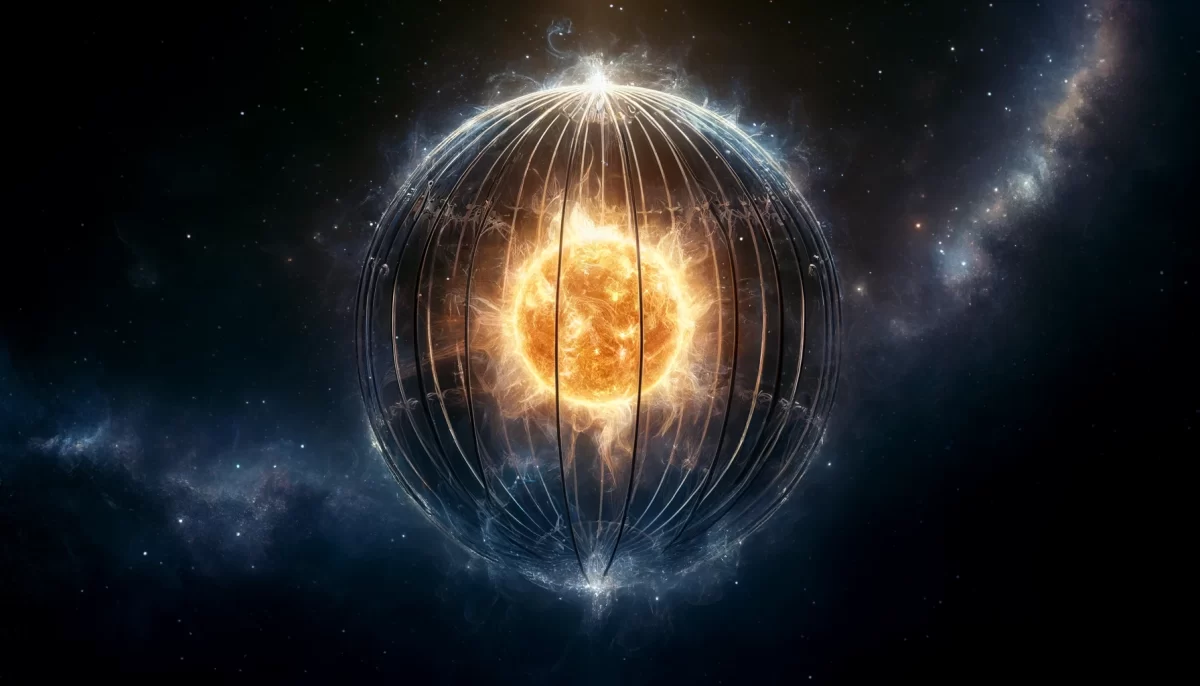















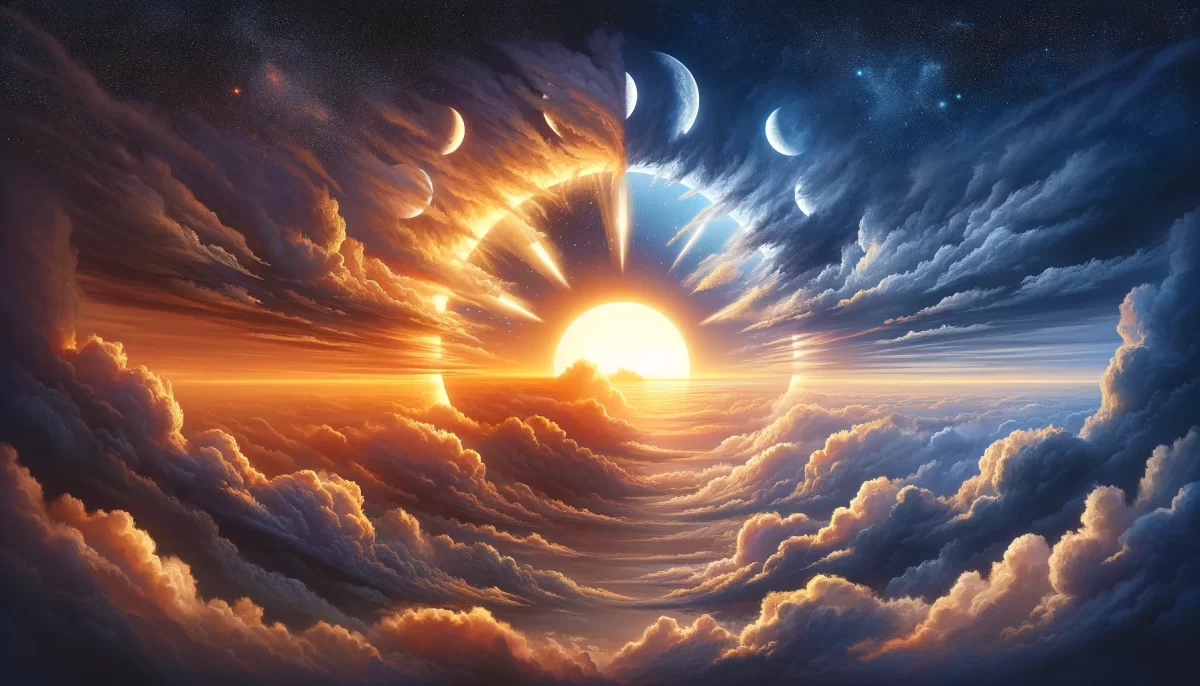
Leave a Reply